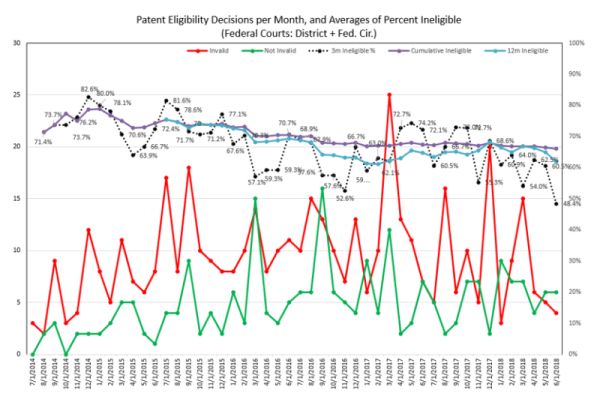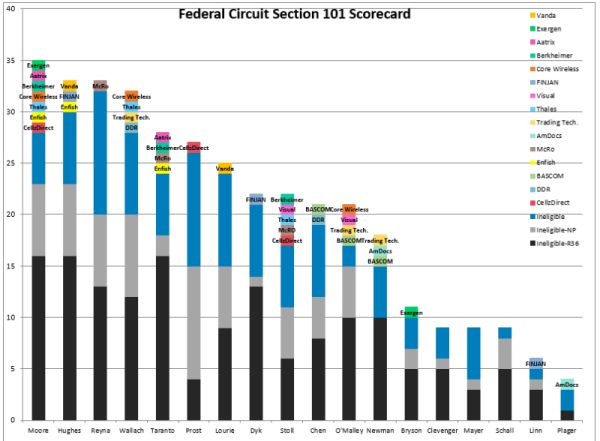Since our last update in June 2017, all the invalidation averages for decisions finding lack of subject matter eligibility have trended slightly downward in the federal courts. Specifically:
- The overall percentage of decisions invalidating patents under § 101 since we started tracking statistics in July 2014 has fallen slightly—from 67.5% to 66.0%—year over year.
- The 12-month and three-month average invalidation rates have likewise fallen (from 64.7% to 61.9%, and from 72.1% to 48.4%, respectively).
- The three-month average recently hit its lowest rate—48.4%—falling below 50% for the first time.

Presumably Berkheimer and its progeny ( Aatrix and Exergen)—which held that the "well-understood, routine and conventional" inquiry of Step 2B is a question of fact—have contributed to the declining rates by making courts less inclined to invalidate patents at early stages of litigation. (Of course, as subsequent cases such as Voter Verified v. Election Systems, SAP v. Investpic, and Interval Licensing v. AOL, make plain, successfully establishing the genuine issue of material fact needed for a patentee to survive early dismissal is by no means as simple as it may appear.) Of the 70 post-Berkheimer decisions through the end of June 2018, there were 25 decisions containing at least one citation to Berkheimer; 20 decisions containing at least one citation to Aatrix; and five decisions containing at least one citation to Exergen.
Ironically, however, of the 25 decisions citing Berkheimer, 15 found invalidity, with only 10 finding validity, a higher invalidation rate than that of the recent cases not citing Berkheimer. Apparently courts primarily cite Berkheimer in order to acknowledge it before distinguishing it!

On the Federal Circuit-watching front, Judge Moore now has the sole distinction of being part of the greatest number of Section 101 decisions (35), as well as the greatest number of pro-eligibility decisions (7). Judges Clevenger, Mayer and Schall, in contrast, have yet to join a pro-eligibility decision in any of the cases that we've analyzed.
The content of this article is intended to provide a general guide to the subject matter. Specialist advice should be sought about your specific circumstances.

